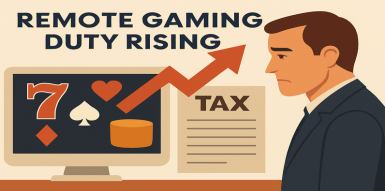Roulette Strategy Comparison – Pros and Cons of Popular Betting Systems
From progressive strategies like Martingale and Fibonacci to non-progressive systems, we outline how each one works. Progressive strategies involve adjusting your bets after wins or losses, often leading to higher risks but potential for recovery. Non-progressive methods offer steadier, low-risk approaches, often favoured by beginners. While none of these roulette strategies can guarantee success, understanding how they work will help you make informed decisions when playing.
Overview of Roulette Strategy Types
Non-progressive roulette strategies are simpler and more suitable for beginners or low stahes players, as they involve placing consistent, smaller bets and don’t require complex calculations. These strategies provide a low-risk way to engage with the game while minimising potential losses.
In contrast, progressive strategies require adjusting your bets based on the outcome of previous rounds, typically increasing after losses. While these systems can offer better recovery opportunities, they also involve higher risk. They are more popular with experienced players looking to maximise potential gains, but careful bankroll management is essential to avoid significant losses.
| Roulette Strategy | System Type | Progression Type | Progression Trigger | Risk | Suitable Bets |
|---|---|---|---|---|---|
| Martingale | Progressive | Steep | Loss | High | Outside Bets |
| Paroli | Progressive | Steep | Win | High | Even-Money Bets |
| D’Alembert | Progressive | Flat | Win | Low | Even-Money Bets |
| Fibonacci | Progressive | Flat | Win and Loss | Low | Even-Money Bets |
| Labouchere | Progressive | Steep | Win | Adjustable | Even-Money Bets |
| 666 System | Progressive | Steep | Win | High | All Bets |
Please note that none of the strategies listed above can guarantee success. Every roulette system carries inherent risk, and it’s important to ensure that the progression triggers and your budget are suitable. For further details and to explore the best roulette sites, check out our dedicated page, where you’ll find trusted platforms to try these strategies safely.
Progressive Roulette Betting Systems
As we have already mentioned, even though the progressive roulette betting strategies are rather risky, they are still preferred by many players. Some of the most popular progressive systems include Martingale, Reverse Martingale (Paroli), D’Alembert, Fibonacci and Labouchere. Each of them follows the idea that players should increase the size of their bets, according to the outcome of each round. Like all systems, however, the progressive roulette betting strategies carry a certain risk, and might not always be recommendable. For your convenience, we have listed their pros and cons in the table below.
| Pros | Cons | |
|---|---|---|
| Progressive Roulette Strategy | Could be Rather Profitable, You Could Limit Your Losses, Wins and Losses Not Balanced, Logical Patterns | Typically Involve a High Risk, Might Fail in the Long Run, Might Result Complicated |
Progressive roulette strategies typically have clear instructions and are easy to follow once understood. However, they may not suit beginners or low-stakes players, as they often require a larger budget. Despite the risks, these strategies are favored for their ability to manage losses more effectively, offering a structured approach to gameplay.
Non-Progressive Strategies
If you’re seeking an easy, low-risk roulette strategy, non-progressive systems might be ideal. While they don’t offer large wins, they are simple and tend to minimise losses. Many players favour strategies like the James Bond system, though it’s important to remember that no strategy is flawless. Be sure to carefully consider each system’s pros and cons before using it.
| Pros | Cons | |
|---|---|---|
| Non-Progressive Roulette Strategy | Easy to Follow, Suitable for Low Rollers, Rather Logical | Unpredictable Results, Small Wins |
Non-progressive strategies, while simpler, are not perfect and carry risks. They may offer small wins but can also result in unpredictable losses. The house edge remains, and no system guarantees success. It’s important to play responsibly, stick to a budget, and never bet more than you can afford to lose, especially when using these strategies as a beginner. Always understand the risks involved and choose your strategy carefully.
How to Pick the Best Roulette Strategy?
No roulette system can guarantee reliable results or consistent wins. Every strategy comes with inherent risks that players should be aware of. However, some systems may suit certain types of players, budgets, or playstyles better.
To choose the most successful roulette strategy for you, consider factors like your experience level, budget, risk tolerance, and how each system fits with your overall gameplay approach. Selecting the right strategy is about balancing these elements to make the most informed choice for your unique needs.
- 1. Consider your proficiency level – some strategies work better for expert or beginner players
- 2. Consider your budget – check whether it is suitable for your chosen roulette betting system
- 3. Betting limits – make sure they meet your budget expectations
- 4. Simplicity – make sure you understand you chosen strategy
- 5. Long-run results – check whether your selected roulette strategy would work in the long run
- 6. Popularity – make sure your chosen strategy is often used by players
- 7. Type of progression – check whether your selected strategy strive on wins or losses
Most strategies can be used in both online and land-based roulette games. It’s a good idea to test your chosen system using a free roulette demo before committing real money. Keep in mind that no strategy guarantees success, but using a betting system can help structure your play and potentially enhance your decision-making.
Are There Roulette Strategies That Work?
All roulette strategies have their limitations, and none can guarantee consistent wins. While some systems may help structure your gameplay and potentially improve your odds slightly, the house edge remains constant. The casino will always have an advantage, and roulette outcomes are unpredictable. It’s essential to approach any strategy with caution and remember that luck plays a significant role in every spin. Be mindful of the risks, choose strategies carefully, and always gamble responsibly.
Roulette Strategies and Uncertainty
The roulette wheel is purely random, making it difficult to predict any outcome, particularly in online games. Even with a strategy, each outcome has the same probability every spin. For example, even-money bets like red/black or odd/even still have less than a 50% chance of winning, especially in American roulette, which has a higher house edge.
In-Built House Edge
The house edge is an unavoidable aspect of every roulette game and cannot be eliminated, regardless of the strategy used. In the long run, the casino will always have the advantage, meaning losses are more likely than wins. A losing streak isn’t due to rigged wheels or dealer tricks, but rather the natural randomness of the game.
While luck may eventually change, it’s important to gamble responsibly and understand that no strategy can overcome the house edge. For further information, refer to the table below for more detailed data.
| Roulette Variant | House Edge | Main Distinction | Even Bets Probability |
|---|---|---|---|
| American | 5.26% | Double Zero Wheel | 47.37% |
| European | 2.70% | Single Zero Wheel | 48.65% |
| French | 2.70% | La Partage Rule / En Prison Rule | 50.00% |
We recommend avoiding American roulette due to its higher house edge, which lowers your chances of winning. European and French roulette, on the other hand, offer better odds and a variety of betting options.
Independence from Previous Results
When choosing a roulette strategy, it’s crucial to understand that each spin is independent, and hot or cold numbers change constantly. Relying on past results won’t improve your chances. For beginners, we recommend starting with low-risk even-money bets, which are suitable for most strategies and provide a safer way to approach the game.
Frequently Asked Questions
We hope you found this guide useful. Playing with a roulette strategy can be challenging, so we’ve answered some common questions below.
More Roulette Guides
Did you enjoy our roulette strategy guide? If so, we’re happy to let you know that we’ve prepared plenty of other helpful articles for players like you. In them, you can find many useful tips, updated information and many curious facts! You can easily access some of our guides by clicking on any of the buttons below. Remember to play responsibly.
 Dec 2, 2025 Gambling Duty Rise 2026
Dec 2, 2025 Gambling Duty Rise 2026 Nov 3, 2025 Brazil’s Casino and Betting Trends
Nov 3, 2025 Brazil’s Casino and Betting Trends Oct 31, 2025 Gambling Tax Increase in Poland
Oct 31, 2025 Gambling Tax Increase in Poland Oct 22, 2025 Ballad of a Small Player – High Stakes Gone Wrong
Oct 22, 2025 Ballad of a Small Player – High Stakes Gone Wrong



